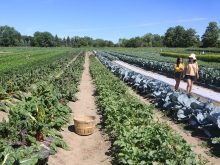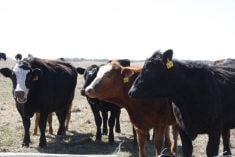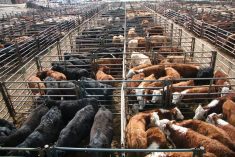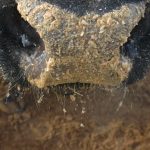BROOKS, Alta. – A walk through the fields at the Brooks crop development centre is like a tour through someone’s exotic garden.
Purple coneflowers wave in the warm winds beside clumps of mullein that grow over two metres high. Other varieties of mint and spice on trial here include orange flowered calendula and angelica.
Mint, dill and basil send off aromas that are more appetizing than most people’s kitchens.
These are what plant researcher Refe Gaudiel calls extra special crops with very special uses.
Read Also

Canada told trade crisis solutions in its hands
Canadians and Canadian exporters need to accept that the old rules of trade are over, and open access to the U.S. market may also be over, says the chief financial correspondent for CTV News.
Few of these plants are grown as a raw commodity. Instead, components of the plants are valued for their oils, medicinal and flavoring properties in the roots, stems or seeds.
Echinacea, for example, is grown for its roots to treat colds and respiratory problems. Calendula, an attractive perennial that grows like a shasta daisy, has bright orange flowers. It is used as a healing agent in salves.
Coriander is blended with other spices to make curry as well as flavoring for gin. Caraway is also used for flavoring.
Growing these crops in Western Canada is still at the infancy stage.
In the case of some plants like coriander or caraway, there is no pedigreed seed available, said Gaudiel. That will improve as demand among farmers grows.
“The market will drive expansion,” he said.
The big question is what will grow in Alberta’s chinook country where the summers are hot and dry and the winter temperatures can swing from minus 40 C to plus 15 within 24 hours.
Suitable to climate
To test hardiness, perennials like ginseng, mints and echinacea are being grown at Brooks to see how they survive southern Alberta
seasons.
Ginseng is under study and so far there hasn’t been a lot of winter kill.
Essential oils from mint plants have had some trouble.
However, the growers for Prairie Aromatic Natural Oils Ltd., at Bow Island, and Summertime Farms, at Carmangay, are experiencing success, said Beata Lees, special crops agronomist with Westco Fertilizer.
Echinacea, or purple coneflower, is being tried in small plots in Alberta, Saskatchewan, British Columbia and Washington state.
“It seems to be growing well. But with any new crop that promises miracles, if it’s too good to be true, it is,” said Lees.
For some plants, the prairie climate and a pool of skilled farmers may be the perfect setup for chickpea, herb and spice production.
“We’re slowly recognizing the talent pool we have with our farmers,” she said.
In Alberta there is a real advantage for special crop production like essential oils from mints, said Lees.
The elevation is higher and the northern climate grows essential oils better than anyone else. A larger share of the credit goes to the farmer.
“Most of our farmers are high entrepreneur, high management, well educated and well versed in markets,” she said.
“I don’t think we’re taking full advantage of ourselves yet.”

















